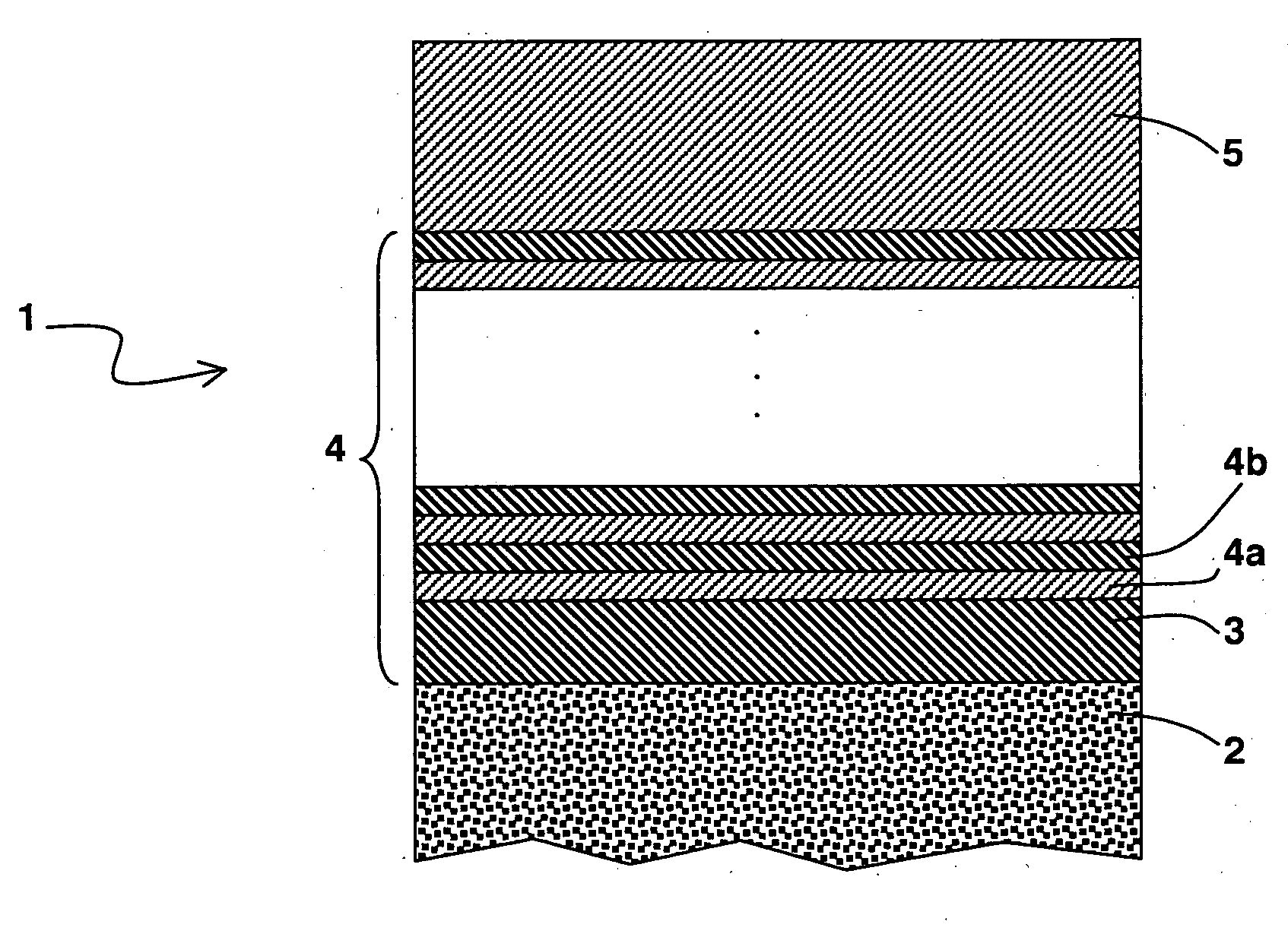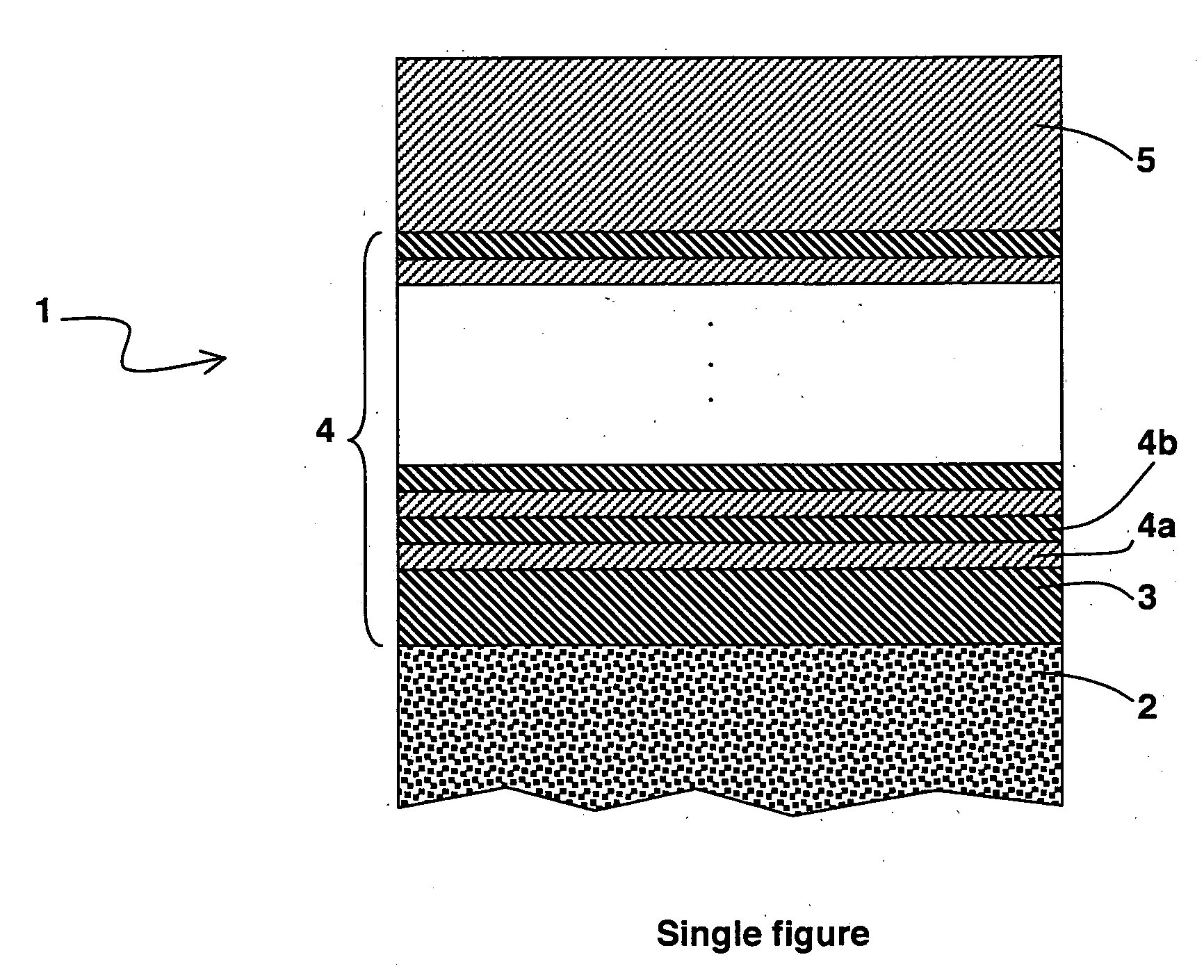Coating for a mechanical part comprising at least one hydrogenated amorphous carbon, and method of depositing one such coating
a technology mechanical parts, which is applied in the direction of chemical vapor deposition coating, coating, electrical equipment, etc., can solve the problems of low thermal stability high intrinsic stress of hydrogenated amorphous carbon film, and inability to perform depositions with a thickness of more than 5 micrometers, etc., to achieve good anti-wear and anti-friction properties
- Summary
- Abstract
- Description
- Claims
- Application Information
AI Technical Summary
Benefits of technology
Problems solved by technology
Method used
Image
Examples
Embodiment Construction
[0021] As represented in the single FIGURE, a coating 1, preferably having a total thickness comprised between 10 and 20 micrometers, is deposited on a mechanical part 2 so as to protect the surface of the part 2 against wear and against friction. The coating 1 comprises a first layer 3 of hydrogenated amorphous silicon carbide, a stack of layers 4 and an layer external 5 of hydrogenated amorphous carbon (DLC). The first layer 3 is arranged on the surface of the mechanical part 2 and preferably has a thickness comprised between 150 and 300 nanometres whereas the external layer 5 made from hydrogenated amorphous carbon has a thickness comprised between 0.5 and 2 micrometers. What is meant by hydrogenated amorphous silicon carbide, also noted SiC:H or a-Si1-xCx:H, x preferably being about 0.5, is an amorphous silicon carbide compound in which a smaller proportion of hydrogen than the proportions of silicon and carbon is incorporated. Such a compound does not comprise any C—C type bond...
PUM
| Property | Measurement | Unit |
|---|---|---|
| Thickness | aaaaa | aaaaa |
| Thickness | aaaaa | aaaaa |
| Thickness | aaaaa | aaaaa |
Abstract
Description
Claims
Application Information
 Login to View More
Login to View More - R&D
- Intellectual Property
- Life Sciences
- Materials
- Tech Scout
- Unparalleled Data Quality
- Higher Quality Content
- 60% Fewer Hallucinations
Browse by: Latest US Patents, China's latest patents, Technical Efficacy Thesaurus, Application Domain, Technology Topic, Popular Technical Reports.
© 2025 PatSnap. All rights reserved.Legal|Privacy policy|Modern Slavery Act Transparency Statement|Sitemap|About US| Contact US: help@patsnap.com


